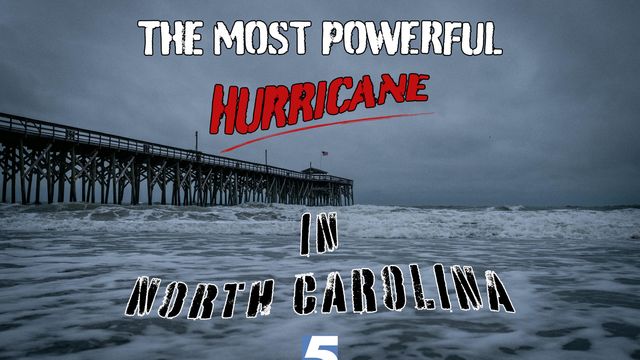Dating back to the 1750s: Hidden history of NC's earliest hurricanes
Most North Carolinians can name the most devastating hurricanes of their lifetimes – and those names come along with scary memories and sad memories.
Hugo. Fran. Floyd. Florence. Hazel.
We know how much damage the destructive winds and floods can cause in modern times. But how much damage did these monster storms cause in the centuries before hurricanes had names? How did pre-Revolutionary colonies planted right on the coastline respond when they saw those distinctive gray clouds rolling down the horizon?
Most of the memories and impacts of those early storms are a mystery to the modern era – many colonials either could not write or did not think to create records of these storms. And they certainly didn't have cameras.
Plus, a hurricane had potential to wash away entire communities.

One of the earliest hurricanes to hit North Carolina in recorded history was written about by adventurer John Lawson.
Crashing into our coast before hurricanes were given names, it's simply called The Storm of 1752.
When the hurricane moved through Onslow County, just north of colonial Wilmington, in September, it destroyed the courthouse – along with all public records.
According to the NC Museum of History, "The destroyed courthouse contained records like deeds, tax documents, and wills. Therefore, no one could prove land ownership, collect taxes, or probate (make legal) deceased persons' wills. The county's business stopped."
The destruction actually caused the Town of Johnston to be abandoned.
"Virtually every building in town was reportedly wrecked, and eight residents were killed. So great was the loss at Johnston that the town was abandoned and a new county seat was established at Wantland’s Ferry (known today as Jacksonville). The only structure that remained at Johnston was the jail," according to North Carolina’s Hurricane History.
Eight people were reported to have died.

George Washington's Storm: Before hurricanes had official names
Naming conventions in the 1700 and 1800s were often very direct. A community, for example, might be named "Chapel Hill" because of its proximity to a hill with a chapel on top, or "Mill Brook" because it's near a brook with a major mill on it.
Multiple decades of hurricanes often had names like "The Centennial Gale" or "The Great Gust" or "George Washington's Storm."
George Washington's Storm reportedly moved up North Carolina's outer banks before striking Washington's home in Mt. Vernon, Virginia. He wrote an account of the great tempest in his diary.
He wrote, "A very high wind all night, which, this morning, being accompanied with rain, became a hurricane – driving the Miniature Ship Federalist from her Moorings, and sinking her – blowing down some trees in the groves & about the houses."
The storm was "very violent and severe, more so than has happened for many years."
The tide, he wrote, rose near 4 feet higher than it was ever known to do.
"At home all day," he wrote.
Most destructive hurricanes of the modern era
Much like our nation's first president George Washington did when faced with a severe tropical system, most of us "stay home all day." Centuries later, we still batten down the hatches and prepare for the worst, while hoping for the best.
Take a look at our countdown of North Carolina's five most destructive hurricanes of the modern era, and exactly how each storm impacted our state.












